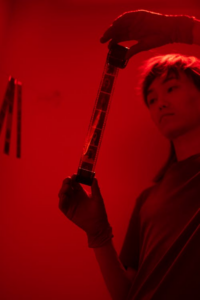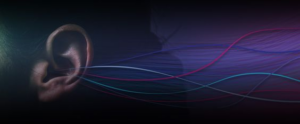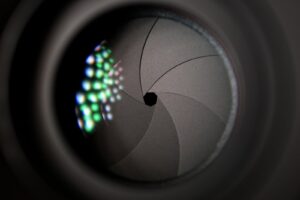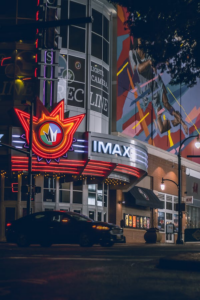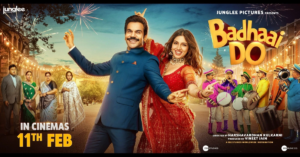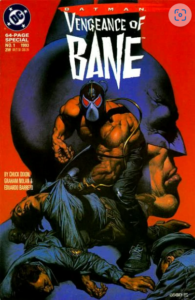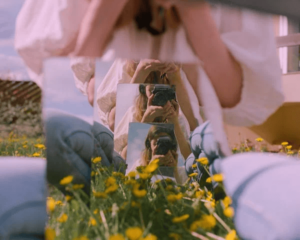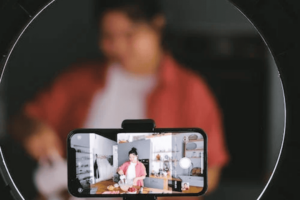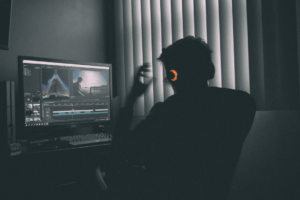Literary devices empower a writer to communicate a profound significance beyond the words themselves. These devices harmonize with the plot and characters to enhance a narrative, provoking contemplation on the intricacies of life, society, and the essence of humanity. Explore the world of literary devices and their profound impact on storytelling.
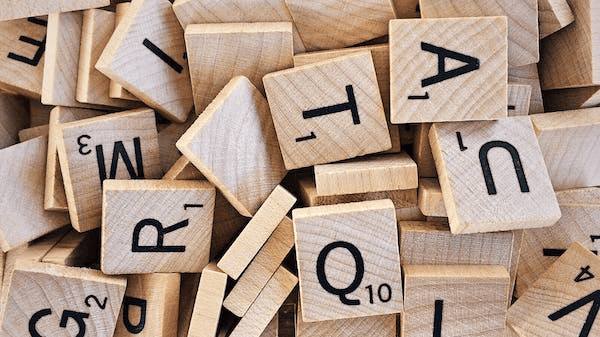
What are Literary Devices?
Writing can be made just more than its literal meaning yet meaningful by using literary devices or methods. They are methods for assisting the reader in guiding how to read the work in that way. A quality of connection lies at the heart of all literary devices; via developing or exploring relationships between objects, writers enable readers to view and understand the world from fresh perspectives. Comparing things is one way that literary devices frequently connect. Similes and metaphors are the most evident types of comparisons. A metaphor, like “The tree is a giant,” directly contrasts two things. “The tree is like a giant” is an example of an indirect comparison or simile. In both cases, the tree is associated with and compared to something (a giant) larger than it is. Other literary devices forge connections in different ways. For example, imagery and vivid description connect writing richly to the worlds of the senses. Alliteration uses the sound of words to forge new literary connections.
What is a Literary Device? || Literary Device Lectures
Types of Literary Devices
Literary devices are techniques or elements writers use to enhance the style, meaning, and overall effectiveness of their literary works. There exists a multitude of literary devices, each capable of classification into distinct categories based on their purposes and utilization within the realm of writing.
Figurative Language
- Metaphor: A direct figure of speech that draws a direct analogy between two dissimilar things (e.g., “Time, the thief of moments”).
- A simile is a literary device where two unlike things are compared using the words “like” or “as,” as in the example, “Her smile radiated like the sun.”
- Personification – Attributing human qualities to non-human entities (e.g., “The wind whispered through the trees”).
Imagery
- Visual Imagery – Creating vivid mental images through descriptive language.
- Auditory Imagery: Evokes the sense of hearing.
- Tactile Imagery: Evokes the sense of touch.
- Olfactory Imagery -Appeals to the sense of smell.
- Gustatory Imagery: Relates to the sense of taste.
Symbolism
Using objects, characters, or actions to represent abstract ideas or concepts (e.g., a red rose symbolizing love).
Anastrophe
Anastrophe is a rhetorical device in movies where words or phrases are arranged in an unconventional order to create emphasis or impact.
Anthropomorphism
Anthropomorphism is when non-human entities or objects are portrayed with human characteristics or emotions.
Aphorism
Aphorisms are concise and memorable statements of wisdom or truth.
Hypophora
Hypophora is a technique where a character poses a question and then immediately answers it.
Litotes
Litotes is a form of understatement in movies where a positive statement is expressed by negating its opposite.
Synecdoche
Synecdoche involves using a part of something to represent the whole or vice versa.
“What is a Synecdoche?”: A Literary Guide for English Students and Teachers
Archetype
Archetypes are recurring symbols, characters, or themes in movies that represent universal human experiences.
Character Archetypes in Movies Ep1: How to Write a DYNAMIC Leader [Character Traits & Development]
Alliteration
The recurrence of the initial consonant sounds within a series of words, as seen in the phrase, “She sells seashells by the seashore.”
Assonance
The repetition of vowel sounds within words (e.g., “The rain in Spain falls mainly in the plain”).
What is assonance? 🤔 | Assonance in English | Learn with examples
Consonance
The repetition of consonant sounds within words (e.g., “pitter-patter”).
Onomatopoeia
Words that imitate the sound they represent (e.g., “buzz,” “moo,” “boom”).
What is ONOMATOPOEIA? | Learn with Examples
Irony
- Dramatic Irony: Arises when the viewers or readers are privy to information that remains concealed from the characters within the story.
- Verbal Irony: Expressing a statement with a meaning that contradicts its literal words, often exemplified by sarcasm.
- Situational Irony -When there is a discrepancy between what is expected and what happens.
Situational irony: The opposite of what you think – Christopher Warner
Irony Explained — 3 Types of Irony Every Storyteller Should Know (Verbal, Situational, and Dramatic)
Hyperbole
Exaggeration for emphasis or effect (e.g., “I’ve told you a million times”).
What is hyperbole? 🤔 | Hyperbole in English | Learn with examples
Oxymoron
A combination of contradictory or opposing words (e.g., “bittersweet”).
What is an OXYMORON? | Learn with Examples
Allusion
A mention or reference to a familiar person, place, event, or piece of literature, as in the phrase, “He had the charm of a true Romeo with the ladies.”
“What is an Allusion?”: A Literary Guide for English Students and Teachers
Foreshadowing
Giving hints or clues about events that will occur later in the story.
Paradox
A statement that appears self-contradictory but may reveal a deeper truth (e.g., “less is more”).
Anaphora
The purposeful repetition of a word or phrase at the start of consecutive sentences or clauses, aiming to highlight a specific concept, as seen in the well-known declaration, “I have a dream.”
“What is Anaphora?”: A Literary Guide for English Students and Teachers
Epiphany
A moment of sudden realization or insight experienced by a character.
Understanding What Epiphany is and its Importance in Literature
Juxtaposition
Placing two contrasting elements side by side to highlight their differences.
Juxtaposition: Explanation, Effects, Example | AP Lang Rhetorical Strategies
Parallelism
Using similar grammatical structures, phrases, or clauses for rhetorical effect.
Parallelism: The secret to great writing
Allegory
A story in which characters and events symbolize abstract concepts or moral principles.
“What is an Allegory?”: A Literary Guide for English Students and Teachers
Euphemism
The use of a mild or less direct word or phrase to replace a harsh or blunt one (e.g., “passed away” instead of “died”).
What is EUPHEMISM? | Learn with Examples
Metonymy
Using one word to represent something closely associated with it (e.g., “The White House issued a statement”).
“What is Metonymy?”: A Literary Guide for English Students and Teachers
Cliffhanger
It’s a familiar feeling with movies and TV shows. You’re on minute 59 of an hour-long television episode, and the protagonist is about to face the villain, and then the episode cuts to black. Known as a cliffhanger, this plot device marks the end of a section of a narrative with the express purpose of keeping audiences engaged in the story.
Cliffhangers in Stories – An Intro to Story – Episode 19
Extended Metaphor
Extended metaphors build evocative images into a piece of writing and make prose more emotionally resonant. Extended metaphor examples can be found across all forms of poetry and prose. Using extended metaphors in your work will help you engage your readers and improve your writing.
What is an Extended Metaphor? Lesson and Activity
Humor
Humor brings people together and has the power to transform how we think about the world. Of course, not everyone is proficient at being funny, particularly in their writing. Making people laugh is a skill, and because so much relies on instinct, it cannot be taught. However, all writers can learn more about how humor functions in writing.
The Skill of Humor | Andrew Tarvin | TEDxTAMU
Motif
A motif is a repeated element that has symbolic significance to a story. Sometimes, a motif is a recurring image. Sometimes, it’s a repeated word or phrase or topic. A motif can be a recurrent situation or action. It can be a sound, a smell, a temperature, or a color. The defining aspect is that a motif repeats. Through this repetition, a motif helps to illuminate the central ideas, themes, and deeper meaning of the story in which it appears.
“What is a Motif?”: A Literary Guide for English Students and Teachers
Motif vs. Symbol
Both motifs and symbols are used across artistic mediums. Painters, sculptors, playwrights, and musicians use motifs and symbols in their art forms. And while they are similar literary terms, “motif” and “symbol” are not synonyms.
Satire
Satire is a frequently amusing method of jesting at those in authority, occasionally employed as a catalyst for instigating societal transformation. It can be integrated into any facet of culture, art, or entertainment.
“What is Satire?”: A Literary Guide for English Students and Teachers
Verisimilitude
Verisimilitude is a theoretical concept determining the act of truth in an assertion or hypothesis. It is also an essential tenet of fiction writing. Verisimilitude helps to encourage a reader’s willing suspension of disbelief. When using authenticity in writing, the goal is to be credible and convincing.
“What is Verisimilitude?”: A Literary Guide for English Students and Teachers
Vignette
A writer’s job is to engage readers through words. Vignettes and poetic slices of life are literary devices that bring us deeper into a story. Vignettes help to step away from the actual plot and come closer to a particular character, concept, or place. Writers use vignettes to highlight something that wouldn’t be visible in the story’s main plot.
Literary Devices and Films
Literary devices are not exclusive to written literature; they are also commonly employed in movies to enhance storytelling and evoke emotions. Film directors and screenwriters use symbolism, foreshadowing, visual imagery, and dialogue filled with metaphors and similes to create compelling narratives. Cinematic techniques like camera angles, lighting, and sound effects are equivalent to literary devices in written works, serving to convey themes, build suspense, and engage the audience’s senses. Whether in books or on the silver screen, these devices play a crucial role in shaping narratives and conveying deeper layers of meaning.
“What is a Vignette?”: A Literary Guide for English Students and Teachers
How are Literary Devices Used in Screenwriting?
In screenwriting, literary devices are essential tools for crafting engaging and meaningful narratives in the visual medium of film and television. Writers utilize techniques like symbolism to imbue objects, settings, or characters with deeper layers of meaning, enhancing the story’s themes. Foreshadowing is employed to create anticipation and build suspense in the audience’s mind, while metaphors and similes are often embedded in dialogue to convey characters’ emotions and motivations. Additionally, cinematic elements like camera angles, lighting, and sound design serve as visual and auditory equivalents to literary devices, allowing screenwriters to evoke specific moods and enhance storytelling. By skillfully incorporating these literary and cinematic devices, screenwriters bring scripts to life, captivating viewers and adding complexity to the narrative fabric of their stories.
Why and How Does a Film Use Literary Devices?
A film uses literary devices to enrich its storytelling, connect with the audience on a deeper level, and convey complex themes or emotions. Literary devices in cinema often include visual metaphors, symbolism, dialogue, and narrative structures. For instance, symbolism through recurring motifs or objects can subtly communicate character development or overarching themes. Dialogue filled with metaphors and similes helps convey characters’ inner worlds and motivations. Narrative devices like foreshadowing create anticipation and suspense, keeping the audience engaged. By integrating these literary techniques with the visual and auditory elements of film, directors, and screenwriters add layers of meaning and emotional resonance to their work, transforming a simple story into a multi-dimensional and thought-provoking cinematic experience.
Some of the Commonly Used Literary Devices in Movies
Literary devices are not exclusive to written literature; they are also prevalent in movies and other forms of storytelling. Movies often incorporate literary devices to enhance storytelling, create depth, and engage the audience on multiple levels. Here are some common literary devices used in movies:
Symbolism
Symbols represent deeper meanings or concepts in movies. For example, in the film “The Shawshank Redemption,” the poster of Rita Hayworth symbolizes hope and the desire for freedom.
Foreshadowing
Like literature, foreshadowing in films provides clues about future events in the storyline, effectively heightening tension and anticipation. For instance, the eerie music and visual cues that foreshadow a jump-scare moment in a horror movie.
Types of Foreshadowing in Films — What is Indirect vs. Direct Foreshadowing?
Metaphor
Metaphors compare two unrelated things to highlight a similarity. In the movie “Forrest Gump,” the phrase “Life is like a box of chocolates” is a metaphor for the unpredictability of life.
What is a Metaphor — 8 Ways to Create Meaning with Comparison
Irony
Movies often employ irony, where there is a contrast between what is expected and what happens. Dramatic irony, in particular, creates tension when the audience knows something the characters do not.
Situational Irony “Finding Nemo”
Flashback
Flashbacks are a narrative device used to show events that occurred in the past. They can be used to reveal character backstory or to provide insight into the current situation. For instance, the film “Memento” uses a series of flashbacks to unravel its complex narrative.
Ratatouille (2007) – Anton Ego Tastes Ratatouille – Flashback Scene [HD]
Allusion
Movies can reference other literature, art, or historical events. These references can add depth and resonance to the story. For example, “The Matrix” alludes to various philosophical and religious concepts.
Personification
Personification attributes human qualities to non-human entities. Animated movies frequently use this device, such as giving emotions and personalities to animals or objects, as seen in Disney’s “Beauty and the Beast.”
Allegory
An allegory is a narrative with a concealed or symbolic significance. The film “The Chronicles of Narnia: The Lion, the Witch and the Wardrobe” is frequently seen as an allegory for Christian themes and the concept of salvation.
Great Allegory Movies You Should Watch
Dialogue
Well-crafted dialogue in movies can be a form of wordplay, wit, or subtext. It can reveal character traits, motivations, and conflicts. Quentin Tarantino’s films, like “Pulp Fiction,” are known for their sharp and memorable dialogue.
Imagery
Imagery uses vivid descriptions to create mental pictures for the audience. This is particularly important in visual storytelling, as filmmakers use cinematography, color, and visual effects to create powerful imagery.
Christ Imagery In Film – Supercut
Mood and Atmosphere
Directors and cinematographers use lighting, music, and camera angles to set the mood and atmosphere of a scene or the entire film. This helps convey emotions and enhance storytelling.
Narrative Structure
Movies can experiment with non-linear storytelling, similar to techniques used in literature. Films like “Pulp Fiction” and “Memento” are famous for their unconventional narrative structures.
Three Act Structure Explained — The Secret to Telling a Great Story
Literary Devices Vs. Literary Elements Vs. Literary Techniques
Literary devices, literary elements, and techniques are all important components of literature and storytelling, but they serve different purposes and refer to distinct aspects of a literary work.
Literary devices are specific techniques or tools writers use to create particular effects, such as metaphors, similes, alliteration, or foreshadowing. These devices add depth and richness to the text and are primarily concerned with language and expression.
Literary elements, on the other hand, are fundamental components of a story’s structure and content. These include characters, setting, plot, theme, and point of view. Literary elements provide the framework for the narrative and shape the overall meaning and interpretation of the work.
Literary techniques encompass a broader range of strategies and methods writers employ to convey their ideas and engage the reader. This category includes not only literary devices but also elements of style, tone, symbolism, and narrative techniques like flashbacks or stream of consciousness. Literary techniques encompass both language-based devices and broader storytelling strategies.
Why Are Literary Devices Important in Writing?
Literary devices are potent instruments that should not be underestimated in storytelling. They can accentuate phrases, stir up emotions and atmospheres, and illuminate an author’s intentions by enhancing the narrative’s clarity and vividness. While literary devices center on language and expression, literary elements establish the fundamental building blocks of a narrative, and literary techniques encompass a diverse set of tools and strategies writers employ in their craft. Collectively, these components and methods enrich and intricately weave the tapestry of literary creations.
Literary Devices and Disney Movies
Disney movies are a prime example of how literary devices are seamlessly incorporated into animation and storytelling. These beloved films employ a wide range of literary devices, such as symbolic symbolism in “The Lion King,” where Simba’s journey parallels the hero’s journey, or the use of allegory in “Beauty and the Beast,” where characters represent virtues and vices. Additionally, Disney’s use of personification, often with talking animals or inanimate objects, adds depth to characters and themes. The catchy songs and clever wordplay in Disney films are a testament to the use of literary techniques like rhyme and alliteration. Through these devices, Disney captivates audiences of all ages while delivering powerful messages and timeless tales.
Top 10 Uses of Foreshadowing in Disney Movies
A Few Examples
The Hunchback of Notre Dame (1996)

This film employs powerful literary devices such as symbolism and allusion. It draws from Victor Hugo’s novel, incorporating themes of justice, morality, and the human condition.
The Hunchback of Notre Dame (1996) Trailer #1 | Movieclips Classic Trailers
[Jwatchnow link=”https://www.amazon.com/Hunchback-Notre-Dame-Bonus-Content/dp/B0791V16VZ/ref=sr_1_10?crid=7A6T8ORVVVLF&keywords=The+Hunchback+of+Notre+Dame+%281996%29&qid=1698617184&sprefix=the+hunchback+of+notre+dame+1996+%2Caps%2C844&sr=8-10″ watchon=”Amazon”]
The Princess and the Frog (2009)

This movie utilizes a literary device called “bildungsroman,” a coming-of-age story. It follows Tiana’s personal growth and transformation as she pursues her dreams in the vibrant backdrop of New Orleans.
The Princess and the Frog – Trailer
[Jwatchnow link=”https://www.amazon.com/Disneys-Princess-Frog-Anika-Noni/dp/B0094KT6J8/ref=sr_1_4?crid=3AJ6PE1UOTHGV&keywords=The+Princess+and+the+Frog+%282009%29&qid=1698617268&sprefix=the+princess+and+the+frog+2009+%2Caps%2C829&sr=8-4″ watchon=”Amazon”]
Peter Pan (1953)

“Peter Pan” incorporates the literary device of a quest narrative, where the characters embark on a journey to a fantastical world. It explores themes of eternal youth and the passage of time.
Peter Pan (1953) Trailer #1 | Movieclips Classic Trailers
[Jwatchnow link=”https://www.amazon.com/Peter-Pan-Signature-Collection-Bonus/dp/B07CRWSD6V/ref=sr_1_1?crid=JEXII1HD3POL&keywords=Peter+Pan+%281953%29&qid=1698617335&sprefix=peter+pan+1953+%2Caps%2C717&sr=8-1″ watchon=”Amazon”]
Pocahontas (1995)

This film incorporates allegory and metaphor to explore themes of cultural clashes and environmentalism. The relationship between Pocahontas and John Smith serves as a symbolic representation of cooperation and understanding.
Pocahontas (1995) Trailer #1 | Movieclips Classic Trailers
[Jwatchnow link=”https://www.youtube.com/watch?v=pdE9fycRn3k” watchon=”YouTube”]
Mulan (1998)

“Mulan” employs the literary device of the hero’s journey, with the protagonist facing challenges and personal growth. It explores themes of courage, identity, and gender roles.
[Jwatchnow link=”https://www.amazon.com/Mulan-Ming-Na/dp/B008Y6TGIY/ref=sr_1_1?crid=3PZ8P9UWNIUD9&keywords=mulan&qid=1698617526&sprefix=mulan%2Caps%2C480&sr=8-1″ watchon=”Amazon”]
These Disney movies demonstrate how literary devices can effectively create engaging and meaningful narratives that resonate with audiences of all ages.
A Few Notable Movies That Used Literary Devices
Many notable movies have used literary devices to enhance storytelling and engage audiences on multiple levels.
The Great Gatsby (2013)

Adapted from F. Scott Fitzgerald’s novel, this film uses symbolism and metaphor to explore themes of wealth, love, and the American Dream.
The Great Gatsby – Official Trailer #1 [HD]
[Jwatchnow link=”https://www.youtube.com/watch?v=Sp3Hc2QvpJM” watchon=”YouTube Movies”]
To Kill a Mockingbird (1962)

Based on Harper Lee’s novel, the film tackles themes of racism and injustice, employing metaphors and allegory to deliver its powerful message.
To Kill a Mockingbird – Blu-ray Trailer – Own it January 31, 2011
[Jwatchnow link=”https://www.youtube.com/watch?v=Dur4c5ioR-I” watchon=”YouTube Movies”]
The Lord of the Rings Trilogy (2001-2003)

These films masterfully use allegory, symbolism, and world-building to create a rich, epic fantasy narrative.
The Lord of the Ring Trilogy (2001-2003) Official Supertrailer – Elijah Wood, Ian McKellan Movie HD
Fight Club (1999)

Known for its unreliable narrator, this film employs irony and symbolism to convey themes of consumerism and identity.
Fight Club | #TBT Trailer | 20th Century FOX
[Jwatchnow link=”https://www.youtube.com/watch?v=nHY0sjIK94k” watchon=”YouTube Movies”]
The Shawshank Redemption (1994)

Adapted from Stephen King’s novella, the film uses symbolism, foreshadowing, and metaphors to explore themes of hope, freedom, and redemption.
[Jwatchnow link=”https://www.youtube.com/watch?v=NmzuHjWmXOc” watchon=”YouTube”]
Memento (2000)

This mind-bending thriller uses non-linear storytelling and unreliable narration to create a unique viewing experience.
🎥 MEMENTO (2000) | Full Movie Trailer in HD | 1080p
[Jwatchnow link=”https://www.amazon.com/Memento-Guy-Pearce/dp/B0763T3HC6/ref=sr_1_1?crid=S3O99PAQ8LUX&keywords=Memento+%282000%29&qid=1698616321&sprefix=memento+2000+%2Caps%2C779&sr=8-1″ watchon=”Amazon”]
Donnie Darko (2001)

This cult classic employs elements of time travel and existentialism to explore themes of destiny and mental illness.
Donnie Darko – Official Trailer
[Jwatchnow link=”https://www.amazon.com/Donnie-Darko-Jake-Gyllenhaal/dp/B07Y3WD6Q7/ref=sr_1_6?crid=1M7FQEKRIMNLX&keywords=Donnie+Darko+%282001%29&qid=1698616488&sprefix=donnie+darko+2001+%2Caps%2C691&sr=8-6″ watchon=”Amazon”]
Inception (2010)

Christopher Nolan’s sci-fi masterpiece uses the concept of dreams within dreams to explore the nature of reality and the subconscious mind.
[Jwatchnow link=”https://www.youtube.com/watch?v=ArRqeBKBsEU” watchon=”YouTube Movies”]
Eternal Sunshine of the Spotless Mind (2004)
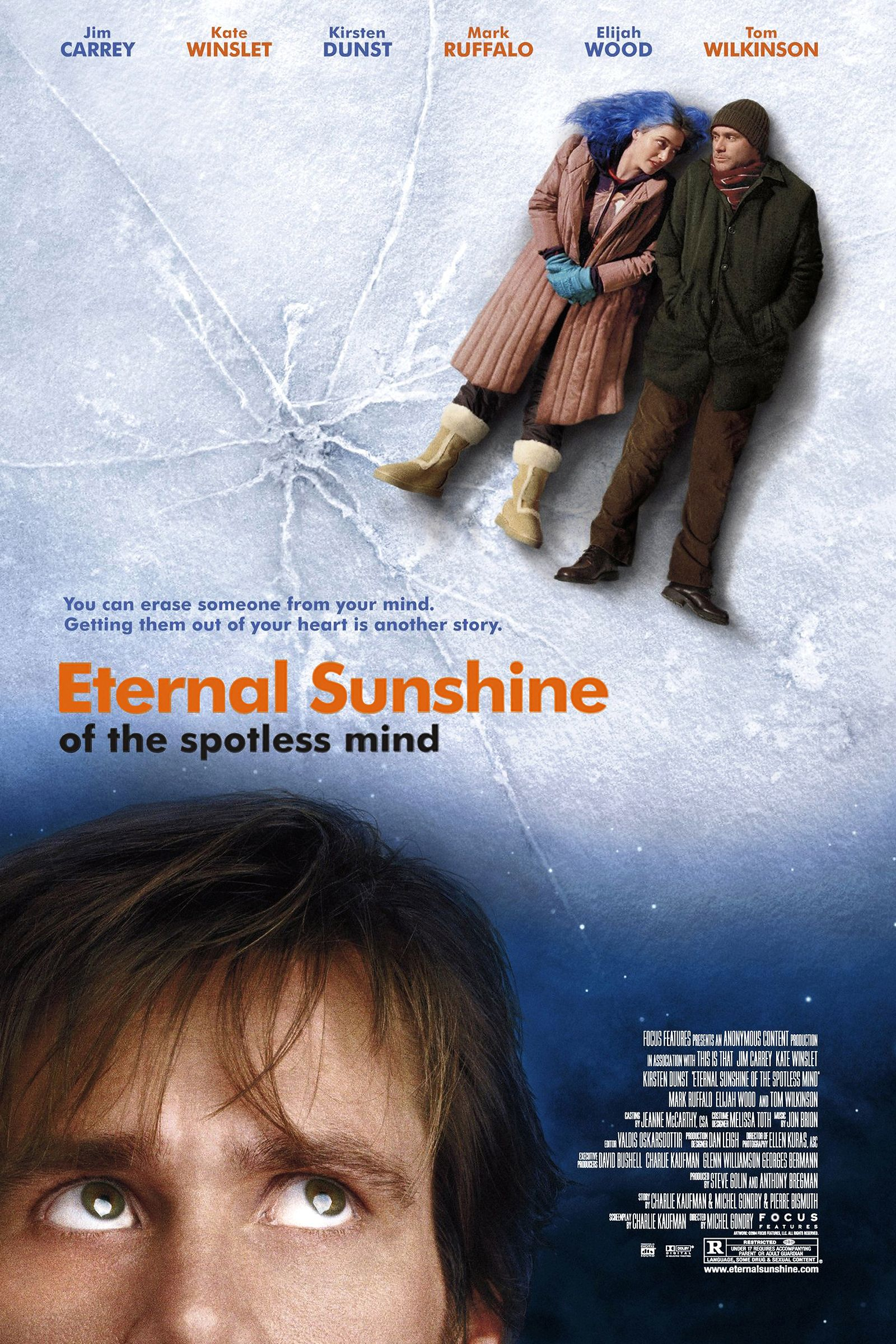
This romantic sci-fi film uses narrative techniques to explore memory, love, and identity.
Eternal Sunshine of the Spotless Mind Official Trailer #1 – Jim Carrey, Kate Winslet Movie (2004) HD
[Jwatchnow link=”https://www.amazon.com/Eternal-Sunshine-Spotless-Mind-Carrey/dp/B001TAFCBC/ref=sr_1_1?crid=1MQCID65EI2WE&keywords=Eternal+Sunshine+of+the+Spotless+Mind+%282004%29&qid=1698616608&sprefix=eternal+sunshine+of+the+spotless+mind+2004+%2Caps%2C710&sr=8-1″ watchon=”Amazon”]
Pan’s Labyrinth (2006)

Guillermo del Toro’s dark fantasy film incorporates elements of magical realism and allegory to tell a hauntingly beautiful and politically charged story.
Pan’s Labyrinth (2006) Trailer #1 | Movieclips Classic Trailers
[Jwatchnow link=”https://www.amazon.com/Labyrinth-English-Subtitled-Sergi-Lopez/dp/B003XC1OP2/ref=sr_1_1?crid=3HW89RR7ASF8X&keywords=pan%27s+labyrinth&qid=1698616734&sprefix=pan%27s+labyrinth%2Caps%2C731&sr=8-1″ watchon=”Amazon”]
Citizen Kane (1941)

Often cited as one of the greatest films ever made, it employs innovative narrative techniques, such as flashbacks and deep-focus cinematography, to explore the life of its enigmatic protagonist.
Citizen Kane – Bande Annonce Officielle – Disponible en BLU-RAY ! Orson Welles
[Jwatchnow link=”https://www.amazon.com/Citizen-Kane-Anniversary-Orson-Welles/dp/B0093QJY0Y/ref=sr_1_1?crid=3IZ5KBGPWH3VT&keywords=Citizen+Kane+%281941%29&qid=1698616761&sprefix=citizen+kane+1941+%2Caps%2C697&sr=8-1″ watchon=”Amazon”]
Blade Runner (1982)

A classic in the science fiction genre, it explores themes of identity and humanity through symbolism and metaphor in a dystopian future setting.
Blade Runner (1982) Official Trailer – Ridley Scott, Harrison Ford Movie
[Jwatchnow link=”http://www.youtube.com/watch?v=bU6Sw7qYfDk” watchon=”YouTube Movies”]
These films showcase how literary devices can be effectively translated from literature to cinema, enriching the storytelling experience and leaving a lasting impact on audiences.
Videos
Literary Devices: How to Use Literary Elements to Improve Writing
What is a Literary Device? || Literary Device Lectures
How to: Literary devices and film techniques
Ransom Literary Devices & Invictus Film Technique Comparison
What is Juxtaposition in Film — How to Take Visual Storytelling to the Next Level

